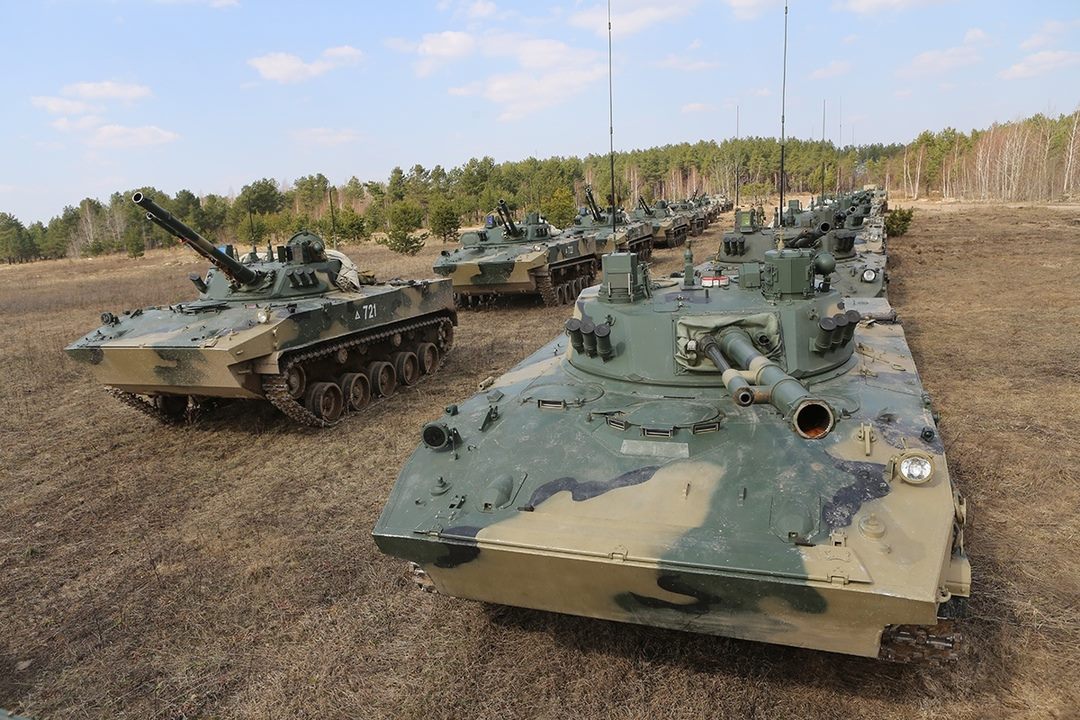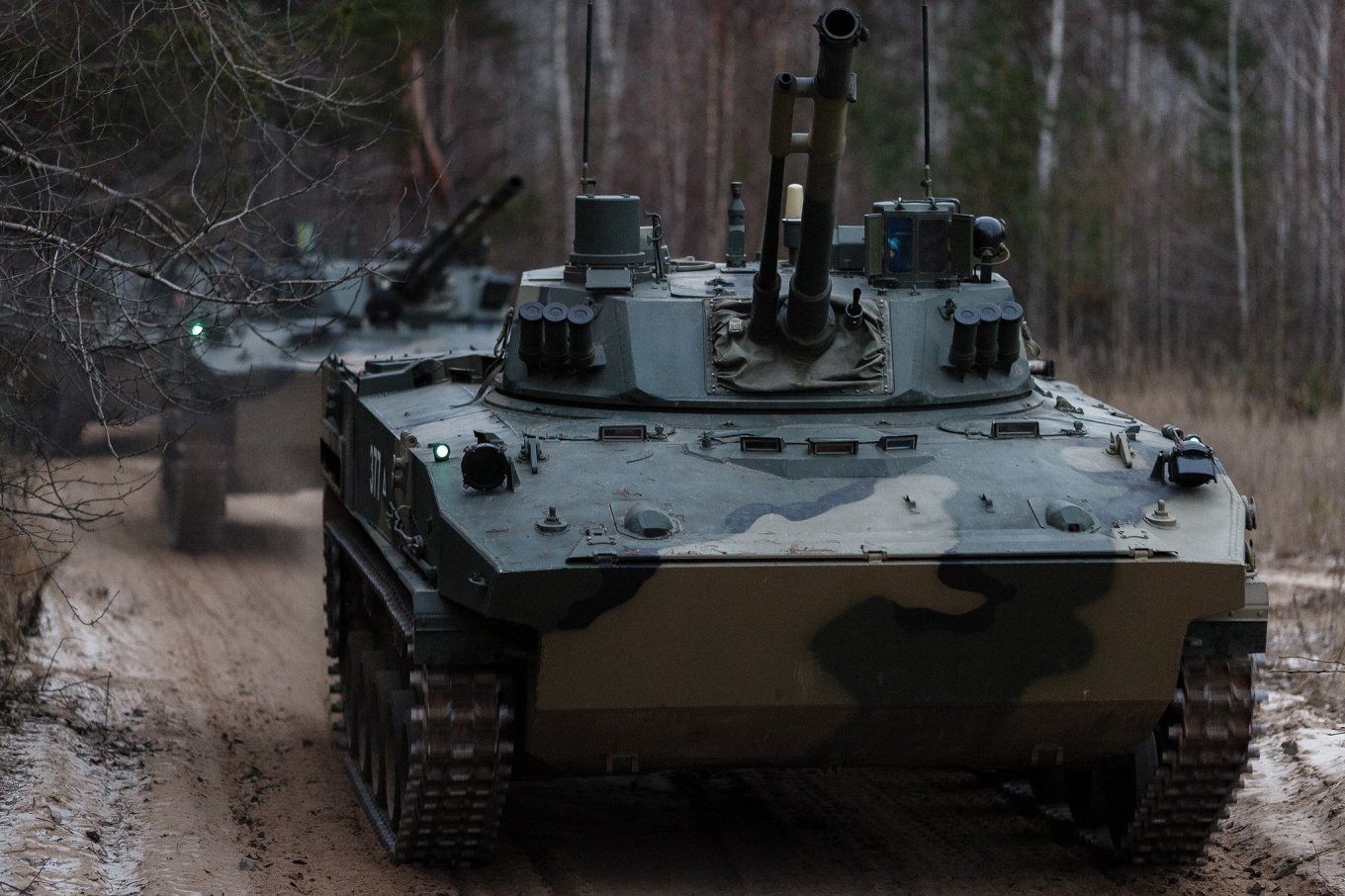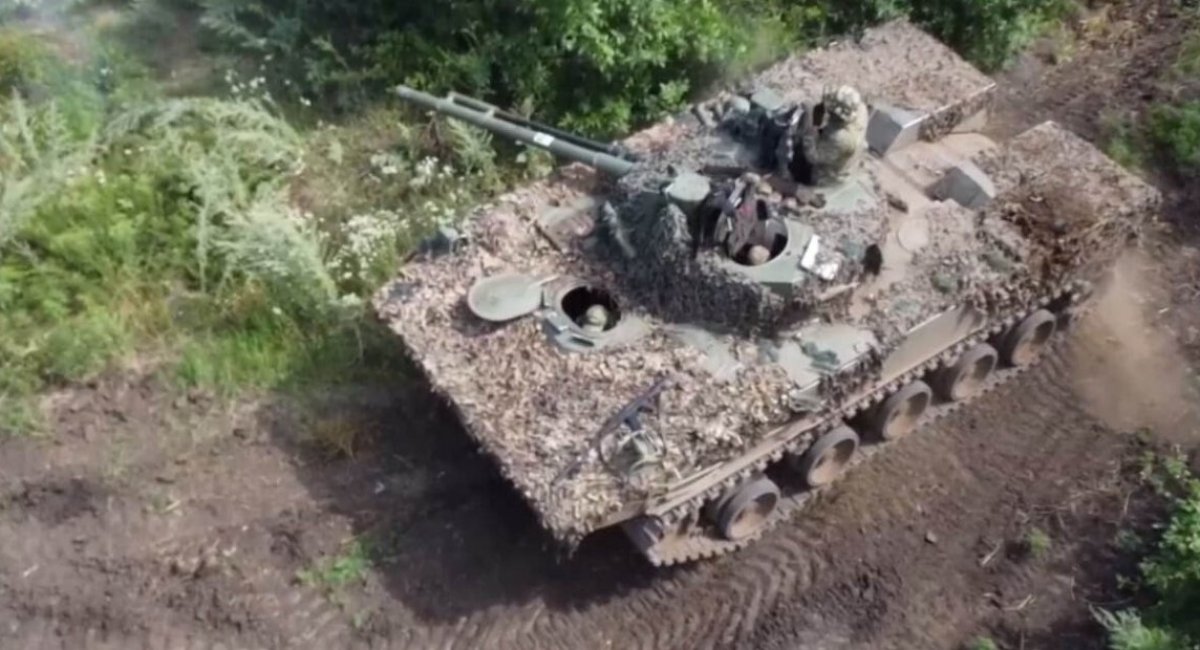A video has appeared in the public domain, which shows that the russian occupiers are using at least one BMD-4M amphibious combat vehicle, that was "strengthened" with anti-cumulative gratings on the sides and in the front projection, as well as with an improvised "barbecue cage" above the vehicle's turret.
So far, it is difficult to judge how massive such an "upgrade" is now, but it can be predicted that in the near future the russians may scale up the practice of installing "barbecu cages" even on light armored vehicles, which until now was rather the "prerogative" of main battle tanks. In some ways, the appearance of protective "visors" on the BMD-4M can be called logical, because as early as August 2023, the occupiers showed that they were using these armored vehicles as a kind of ersatz artillery system, firing from a 100-mm cannon along a hinged trajectory from a closed firing position.
Read more: Newly Reactivated BMD-3 Infantry Fighting Vehicles Hint at Secret russian Stockpiles
According to The Military Balance 2023, at the beginning of this year, the russian army had only 250 BMD-4M amphibious IFVs at its disposal - that is, this armored vehicles are quite rare for the russian army.
It should be noted that Oryx analysts report that at least 90 BMD-4M have been lost on the battlefield during Russia's full-scale invasion of Ukraine since February 24, 2024.
Against this background, the use of such vehicles with a fairly low level of protection, but with a high level of firepower in the "move and shoot" format - may look irrational.
But on the other hand, the russian occupiers may have their own logic here, and it will look as follows.

The doctrine of the use of airborne troops of the russian army since 2019 provides that this type of troops should be used, first of all, precisely as "elite" infantry with a high level of equipment. Obviously, specialized armored vehicles also fall under this logic of "land" operations, even if they are intended specifically for airborne operations.
It can be stated that, against the background of the lack of armored vehicles, the occupiers are trying to use literally everything that is "at hand" and attach "barbecue cages" from above, even if we are talking about amphibious assault vehicles, which those grills will in no way save from Ukrainian anti-tank systems.

As Defense Express reported earlier, With Delay of 3 years russia Began Testing Amphibious Self-propelled Gun 2S42 "Lotus"
.
Read more: Newly Reactivated BMD-3 Infantry Fighting Vehicles Hint at Secret russian Stockpiles














